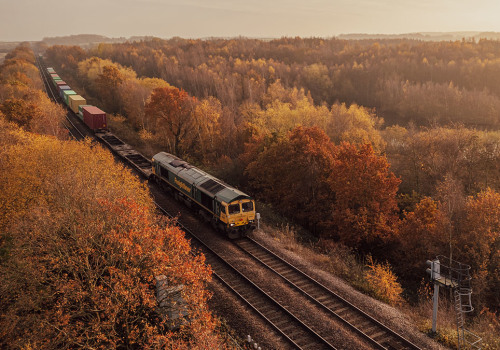In an era where supply chains must balance cost, speed, and environmental responsibility, rail freight services continue to play a crucial role in transporting goods across vast distances. With their ability to move large volumes of cargo efficiently, rail systems have remained a dependable mode of freight transportation for industries ranging from agriculture and manufacturing to energy and retail. As highways grow more congested and carbon reduction becomes a priority, rail freight offers a compelling alternative—combining reliability, scalability, and sustainability. For businesses seeking consistent performance and long-term value, rail freight services stand out as a solution that aligns operational goals with broader environmental and logistical objectives.
Efficiency and Cost-Effectiveness at Scale
One of the biggest advantages of rail freight is its capacity to move massive amounts of goods at a relatively low cost per ton. A single freight train can carry the equivalent of several hundred trucks, drastically reducing the number of trips needed and thus minimizing fuel usage and labor costs. For bulk commodities like coal, grain, metals, and raw materials, rail is often the most logical and cost-effective choice. It allows for the transportation of dense, heavy cargo that might otherwise overwhelm road infrastructure. Additionally, rail networks are less susceptible to weather-related delays and highway congestion, making delivery schedules more predictable and secure.
Environmental Benefits of Rail Transport
Rail freight is also a more sustainable option when compared to long-haul trucking. Trains are significantly more fuel-efficient, capable of moving one ton of freight over 470 miles on a single gallon of diesel. This translates to lower greenhouse gas emissions per mile traveled, helping shippers reduce their carbon footprint. With increasing pressure on companies to meet ESG (Environmental, Social, and Governance) targets and adopt greener supply chain practices, shifting more freight to rail can be a strategic move. Moreover, investment in electrified rail networks and cleaner locomotive technologies continues to enhance rail’s position as an environmentally responsible mode of transportation.
Versatility and Network Connectivity
Contrary to the misconception that rail is limited to certain types of cargo, modern freight rail systems accommodate a wide range of goods. From refrigerated containers and automotive parts to hazardous materials and consumer products, railroads offer various solutions tailored to diverse industries. Intermodal transport—where cargo containers move seamlessly between trains, trucks, and ships—further expands rail’s versatility, allowing goods to reach inland markets and distribution hubs with minimal handling. With established infrastructure that connects ports, major cities, and rural production zones, rail freight supports both domestic and international trade with remarkable efficiency.
Safety and Reliability in Transport
Rail is also one of the safest modes of ground transportation. Freight trains operate on dedicated tracks with sophisticated signal and monitoring systems, significantly reducing the risk of accidents compared to road transport. Rail companies maintain rigorous safety protocols, regularly inspecting tracks, equipment, and cargo to ensure compliance with federal regulations. This level of oversight is particularly important for industries transporting hazardous materials or sensitive goods. Furthermore, the rail industry has invested heavily in tracking technology, giving shippers real-time visibility into their cargo’s journey—providing peace of mind and helping with inventory management and planning.
Logistics Integration and Waste Management Support
Rail freight services don’t operate in isolation—they’re part of a larger logistics ecosystem that includes warehousing, first-mile and last-mile delivery, and waste management. During large-scale shipping operations or industrial development near rail hubs, waste disposal becomes a necessary concern, particularly when construction or packaging materials must be cleared efficiently. That’s where services like Wickenheiser Waste come into play, offering essential dumpster rental and disposal solutions to support these activities. Having a reliable waste management partner on-site helps maintain clean, compliant operations around rail terminals and freight yards, reducing downtime and ensuring a safer, more organized environment for loading and unloading operations.
Challenges and Future Developments
While rail freight offers many benefits, it’s not without its challenges. Infrastructure limitations, especially in less-developed regions, can restrict access to rail services. Additionally, coordination between rail carriers and trucking companies is essential for seamless intermodal transfers. However, with continued investment in rail modernization, including expanded lines, upgraded terminals, and digital automation, the industry is steadily overcoming these barriers. Innovations like automated train operations, predictive maintenance systems, and blockchain-based tracking are poised to further enhance efficiency and transparency in the rail freight sector.
Conclusion: A Strategic Choice for Sustainable Transport
Rail freight services provide a critical link in the global supply chain, offering a balance of reliability, scalability, and sustainability that few other modes can match. For businesses moving large quantities of goods, rail is not only a cost-effective solution but also a strategic one—capable of supporting long-term environmental and operational goals. By integrating services such as Wickenheiser Waste for site support and waste management, organizations can maximize the benefits of rail transport while maintaining efficient, clean logistics operations. In the face of evolving market demands and sustainability standards, rail freight remains a powerful, forward-thinking choice for modern cargo transport.



